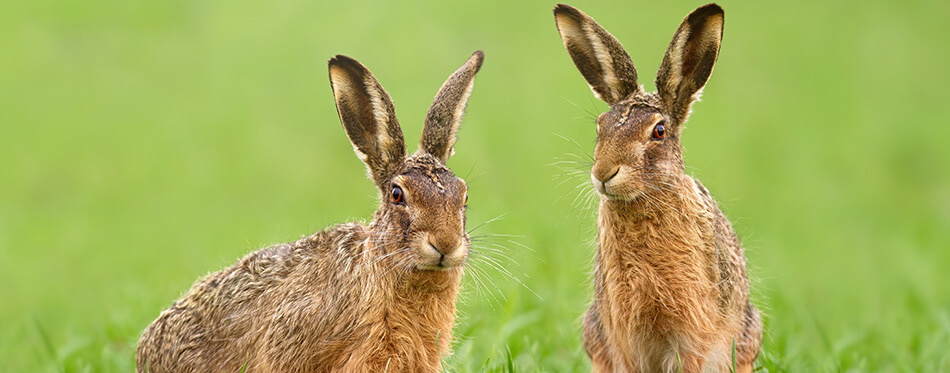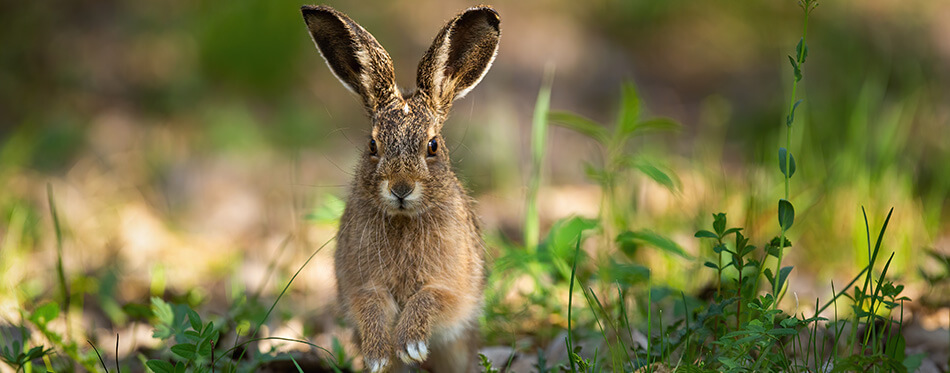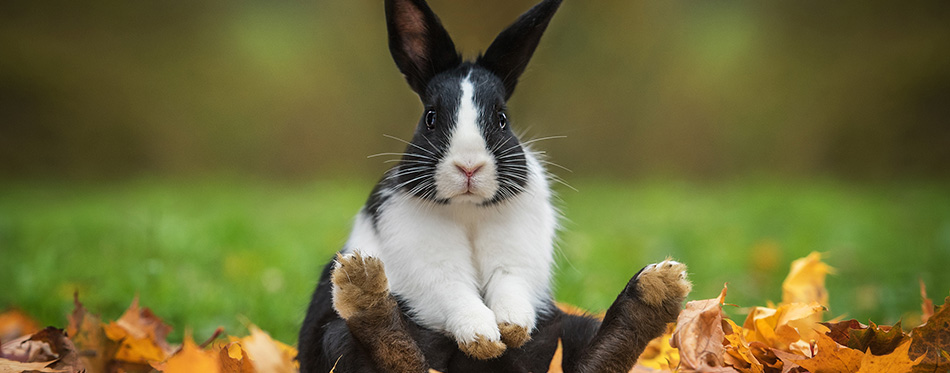Rabbits have always been a common household companion, loved and adored by many worshipping pet owners, and often referred to as ‘bunnies’. Although, you may be asking yourself: “Is there a difference between a bunny and a rabbit? What are the differences between rabbits and hares?”. Any and all bunny vs rabbit or rabbit vs hare questions will be answered below!
Bunny vs. Rabbit Vs. Hare: The Differences
To begin with, there is absolutely no distinction between a bunny and a rabbit simply because the word “bunny” is just an endearing term. Scientifically, however, the word “rabbit” would be the appropriate term to use, whereas the word “bunny” is a colloquialism. After all, calling it the “Easter Rabbit” doesn’t quite have the same ring to it.
On the other hand, a rabbit and a hare are two different species altogether with some distinct differences. These distinctions include their appearance, nesting, breeding habits, and behaviors. That is a large list of differences, all things considered.

A Short History of Rabbits & Hares
Rabbits, hares, and even pikas belong to an order of small mammals called Lagomorpha, which includes over 40 species. The wild rabbits we are familiar with today date back to 4,000 years ago in Europe. Although fossil records tell us that they date back as early as 40 million years ago in Asia. Of course, like most creatures, rabbits adapt and evolve. Thanks to their agile, keen senses, and small frame they have survived and persevered throughout the ages!
Where did the Word “Bunny” Come From?
Despite being an informal term used today, “bunny” derives from the original word “coney”, pronounced “cunny”. However, due to a vulgar distortion of the word, following the 18th century, it was changed to “bunny”. Then, eventually, over a lengthy period of time, the official term was changed from “bunny” to be replaced with “rabbit”. Therefore turning “bunny” into a cute nickname.
The Origin Of The Word “Bunny”
The word “rabbit” eventually became the more common alternative to “bunny”. This was in spite of the fact that “rabbit” had originally been the word used for a baby rabbit or young hare. In addition to this the word “bun”, which was found to have been used as far back as the sixteenth century, was used to mean “rabbit” or “squirrel”.
So to summarise, the meaning of the word “bunny”, that we’re currently familiar with, is actually an informal term often used to emphasize how cute a rabbit is. Also, despite what some may think, baby rabbits are not called bunnies and are actually called kittens or kits.
Hare vs. Rabbit
Rabbits and hares may not be the same species. However, they are from the same family – Leporidae. From afar, rabbits and hares look similar with long ears, a divided upper lip, and strong hind legs. But there are several differences between the two species that set them apart. Getting a closer look at the two will help you to establish some subtle differences in their physical features however, their behaviors and living habits are completely different from one another.
Physical Features
A significant difference between rabbits and hares is their size. Hares are generally significantly larger than most wild and domesticated rabbit breeds. Also, despite both having long ears, hares tend to have significantly longer ears, different skull shapes, and more powerful long hind legs. In addition to this, regardless of varying breeds, hares can often have black markings in their fur found at the tips of their ears.
Diet
The dietary concerns of a rabbit and a hare may also surprise you in the differences listed below. Both are still herbivores, though their preference for tasty foliage differs quite dramatically. This is owing to the fact that both animals live quite different lifestyles, and so their dietary requirements need to match with the type of nutrition they need to go about their day-to-day lives.
- Wild Rabbits: Wild rabbits prefer soft stems, grass, and vegetables.
- Hares: Hares will eat harder food such as small twigs, rinds, and bark.
- Domestic Rabbits: Both rabbits, domesticated and wild, tend to enjoy soft stems, vegetables, and grass. However, being house pets, domestic rabbits are often given other sources of nutritious foods.

The Differences in Newborn Rabbits and Hares
One similar thing about rabbits and hares is that they can both have large litters of babies. However, when their young are born they are completely different due to their rate of growth. Because of this, the way in which they live out their lives is also different.
Baby rabbits, known as kittens, are born blind, deaf, and without fur. On the other hand, baby hares, which are called leverets, are born the exact opposite of baby rabbits. Young hares are generally born with their eyes open and with a layer of fur. Due to this baby hares are more independent from an early age and can leave the nest sooner.
Nesting and Giving Birth
Rabbits will generally have their litters underground in shallow burrows. Alternatively, they will give birth in simple nests lined with grass and padded with their mother’s fur. On the occasions where they have to leave their young, they will cover them with fur and grass in order to protect them from predators and to keep them warm.
Unlike bunnies, hares do not dig underground burrows but will create small depressions in the ground in which to give birth to their young. This is because young hares don’t need to be protected by their parents as rabbits do in their early stages due to them being more independent.
Attributes and Living Habits
Is the easter bunny a hare or a rabbit? If we’re running on facts, they’re probably a rabbit as hares are far less social. Rabbits tend to live in colonies and are known to share their burrows with others. Even domestic rabbits are easy to integrate into a home due to their innate social nature, they thrive on the company of other rabbits and/or humans.
This conveys another significant between the two animals as hares live alone and generally only pair up to mate. This also means that male hares are less likely to conflict with other males as they are less likely to confront another male wanting to mate with the same female. As rabbits live in colonies it is common for the males to fight for dominance, the winner, earning the right to mate with many of the females.
Flight, Freeze or Hide
Rabbits are accustomed to creating burrows in which to nest and hide from predators. Although, if they are spotted out on a stroll, there is every chance they can freeze into position in an attempt to blend into their surroundings. Hares, however, will either hide amongst plants and grass or choose to flee as they are notoriously fast on their feet. Interestingly, a hare can run up to a speed of 40MPH due to its powerful hind legs whereas a rabbit can only run up to 30MPH.
Do hares “box”?
It is not common for male hares to attack each other however, British brown hares have been known to engage in fights that resemble boxing. Male rabbits will often fight for dominance however, female brown hares will defend themselves against males who become too amorous for their liking. In becoming hostile, the two will stand up on their hind legs and swipe at each other with their front paws which can look like they’re boxing.
Domestication
After years of farming and utilizing rabbits as a sustainable food source, rabbits became an increasingly popular household pet. Varying sizes and colorings of rabbits were bred over time and the bunnies remain a popular pet option for homes with children and other animals due to their docile yet sociable natures.
Can a hare be domesticated?
Assuming you’ve caught up with a hare running away from you at 45MPH, it is still not advised to try to tame them or keep them as a pet. Hares are not only in flight mode constantly but they are solitary animals and have not been domesticated, unlike bunnies. A hare belongs in the wilderness, along with wild rabbits, and it would be unnecessary to domesticate one as they would be less likely or able to breed.
Gender
There are no significant physical aspects, other than their genitalia, that could give away the gender of a hare or rabbit. Having said that the gender differences in rabbits can be observed in their behavior over their appearance. Female rabbits will take control of burrowing in order for them to provide a nest for their young, meanwhile, the male will protect the burrow and the female against any attackers.
Just as an added fact: Male hares are known as “jacks”, whereas a female hare is called a “jill”. Male rabbits are known as “bucks” and female rabbits are called “does”.

Rabbits and Hares in North America
The type of bunny you’re most likely to witness in your backyard is the cottontail rabbit as they’re the most common due to them being active all year round. This is because they are not known to hibernate however, they are more likely to be seen during the night and will use their burrows to nest and hide. There are several species of cottontail rabbit that differ subtly in appearance but all have the same cotton-ball-shaped, short tails. These include the eastern cottontail, desert cottontail, and even the mountain cottontail.
However, the most common hare in North America is the ones who inhabit the snowy regions, known as the Snowshoe rabbit or Varying Hare. The snowshoe rabbit’s brown summer fur appears when the snow melts and their snowy white fur completely changes color, this is so the hare still has a defense mechanism to protect them from predators such as foxes, coyotes, and even birds of prey when the lack of snow could leave them vulnerable.
In Conclusion
To sum up, rabbits and hares are two different species that belong in the same order of mammals, yet they are not the same animal. Hares live in the wild and cannot be tamed whereas domesticated rabbits are social creatures making them another loveable animal to bring into your family home.
In addition to this, “bunny” is a term used to replaced “rabbit” or “hare”. Centuries ago we used “bunny” frequently but gradually over time the word “rabbit” became used more and more, which is now used as the appropriate and scientific term. So if you’ve ever found yourself wondering about the difference between these two cute and fluffy creatures, hopefully, this article has answered those questions for you, and then some.

